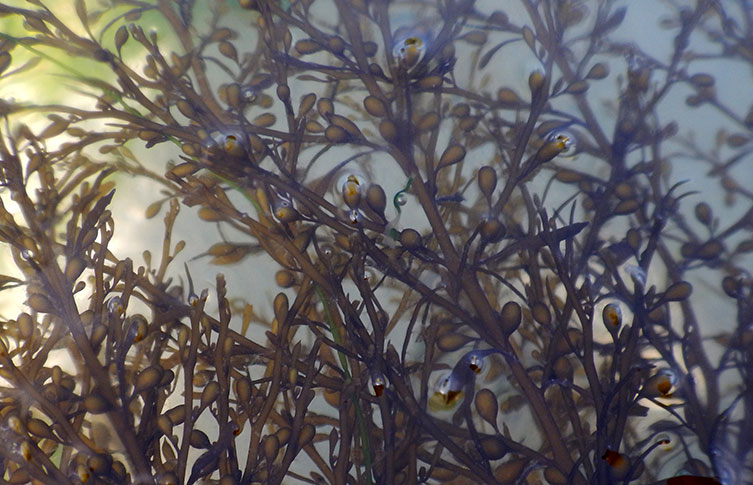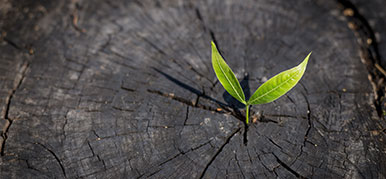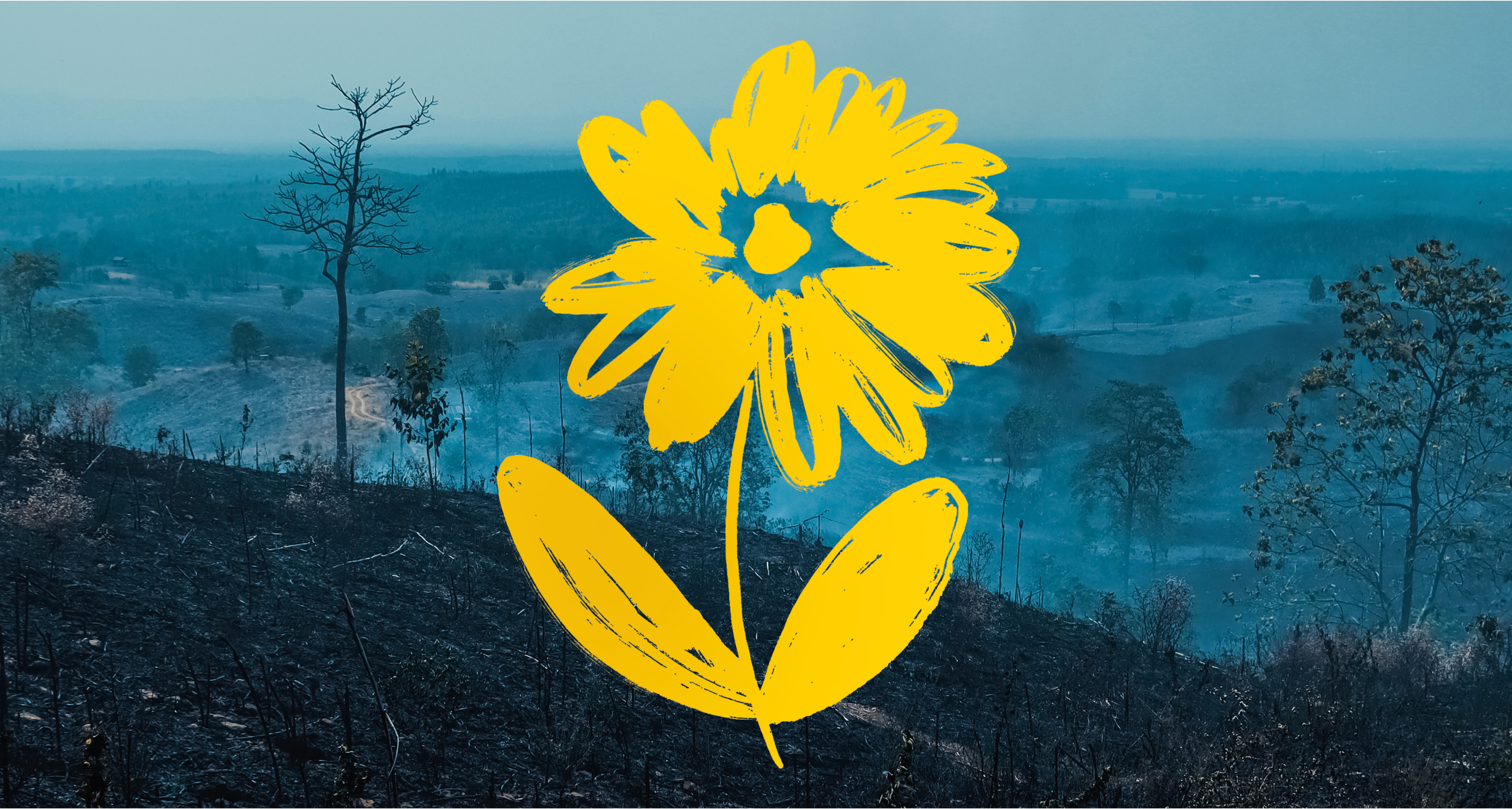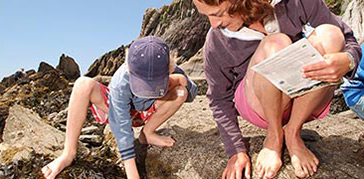Algae grew on Earth long before the dinosaurs first appeared - but climate change could bring an end to their long tenure.
Fossils of some of the earliest relatives of modern-day seaweeds date back 1.6 billion years.
Seaweeds have been exceptionally resilient organisms, outlasting the dinosaurs (which first appeared 230 million years ago) and surviving other mass extinction events.
But rising ocean temperatures are beginning to put some species at risk.
Deforestation
Kelps are structurally complex seaweeds, thought to have first appeared about 23 million years ago. They grow in large, dense groups, which form underwater forests.
These large brown algae tend to grow in cold, rocky seafloors and are abundant in shallow waters around Britain's coastlines, providing for a whole ecosystem.
However, in recent years there has been a decline and shift in distribution of kelps and other seaweed species. These changes are believed to be the result of climate change.

Kelp forests in some areas of the world have been declining in recent years, particularly due to rising sea temperatures © Ethan Daniels/Shutterstock
'We know the water is getting warmer,' says Prof Juliet Brodie, seaweed expert at the Museum.
'It has gone up on average by two degrees centigrade in British coastal waters over the last 40 years. That might not seem like a lot, but we know that it's having a marked effect on some species of seaweed.'
There is also evidence that the sea is becoming more acidic, because it absorbs a large portion of carbon dioxide. Although the long-term effects are unknown, this could be damaging as it may begin to corrode the exterior of some calcified seaweeds.
Losses of seaweeds are not just restricted to Britain. For example, rising sea temperatures and extreme heatwaves in 2011 caused Western Australia to lose 43% of its kelps.
There was also a 93% decline in canopy-forming kelps in northern California from 2008 to 2014, as seen from aerial surveys by the California Department of Fish and Wildlife.
Damaging effects
Seaweeds play a crucial role here on Earth.

Kelp forests provide an important habitat for a wide variety of marine creatures and provide the coast with vital protection © Kirk Wester/Shutterstock
Juliet explains, 'Kelp forests are incredibly important to our coastline because they break the flow of water, and this helps to prevent coastal erosion'.
Declines in seaweeds leave Britain and other coastlines open to the damaging effects of the sea, which reduce the stability of the land. Inhabitants of the seaweed forests, like fish, are also at risk of losing their habitat.
However, public interest and awareness of these important algae needs to be increased to help protect the coast.
'I think people see it as more of a nuisance,' says Juliet, 'but you have to look with fresh eyes and understand their value to us, our coastlines, our fisheries - to the whole ecosystem.
'Without them, we'd really be in a very bad place.'
Invading species
Some non-native species of British seaweed made their way onto the coast over 100 years ago. However, they have been arriving in increasing numbers in recent years.

Japanese wireweed (Sargassum muticum) is a species of non-native seaweed that has been growing on the British coast for 50 years © Lamiot/ Wikimedia Commons
Some of these species remain where they arrived, whereas others are more invasive, spreading around Britain's coast.
Certain species of seaweed in southern Britain, such as the golden kelp Laminaria ochroleuca, are currently at the northern edge of their range, but they're expanding even further north.
Researchers have been helping us understand these changes by extensively mapping seaweeds - though this project comes with its challenges.
'It's difficult to get long-term data,' explains Juliet, 'but evidence suggests that quite a few of our species are changing in distribution.
'On the south coast some of our big kelps are in decline, but if you go further north, they're tending to increase in distribution.'
Join the search
Museum scientists are dedicated to understanding key environmental issues such as the rising sea temperature and arrival of non-native species.

Visitors are able to experience the underwater kelp forest in Hintze Hall's display of pressed seaweeds
Since 2009, and in partnership with the Marine Conservation Society since 2016, the Big Seaweed Search has been an opportunity for the public to contribute to ongoing research.
Thanks to people identifying and reporting the seaweed species found on beaches around Britain, it will be possible for scientists like Juliet to understand how the British coast is changing, and what that could mean for the future.
Find out more
A display of seaweeds is in the Museum's Hintze Hall, giving visitors the chance to explore the underwater world of Britain's coastal seaweeds and learn about the implications of climate change.
This is the second of two films on Juliet's work with seaweeds. Watch the first in the series.

Protecting our planet
We're working towards a future where both people and the planet thrive.
Hear from scientists studying human impact and change in the natural world.

Fixing Our Broken Planet
Discover science-backed, hopeful solutions that will help us to create a more sustainable world.
New gallery open now.

Big Seaweed Search
Identify and record seaweeds to help vital marine research.




Don't miss a thing
Receive email updates about our news, science, exhibitions, events, products, services and fundraising activities. We may occasionally include third-party content from our corporate partners and other museums. We will not share your personal details with these third parties. You must be over the age of 13. Privacy notice.
Follow us on social media